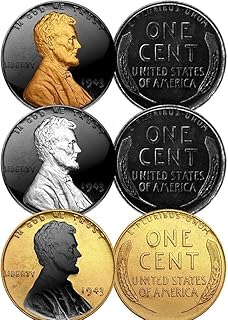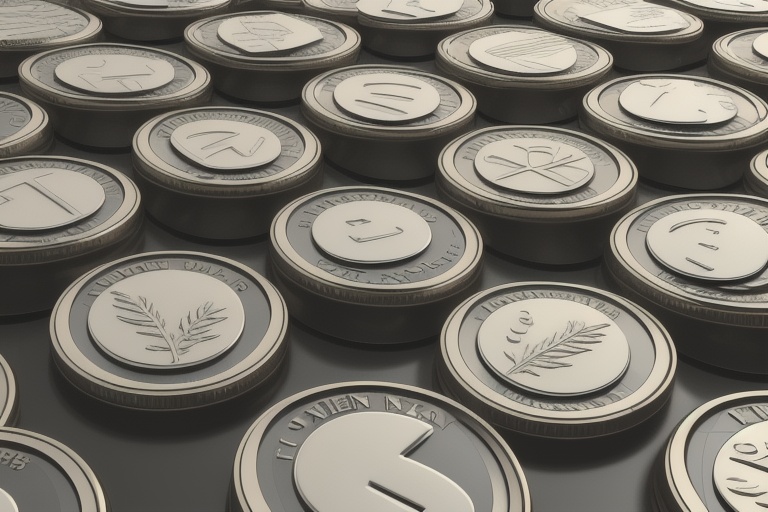Coin collecting is more than a mere hobby—it's an exploration of history, art, and economics, all encapsulated in the small, metallic discs that we carry in our pockets. Each coin serves as a snapshot of the society from which it originates, revealing insights about the culture, technology, and governance of its time. For many enthusiasts, coin collecting is a lifelong commitment fueled by the desire to preserve these treasures for future generations while unraveling the stories they conceal.
Coin collecting is more than a mere hobby—it's an exploration of history, art, and economics, all encapsulated in the small, metallic discs that we carry in our pockets. Each coin serves as a snapshot of the society from which it originates, revealing insights about the culture, technology, and governance of its time. For many enthusiasts, coin collecting is a lifelong commitment fueled by the desire to preserve these treasures for future generations while unraveling the stories they conceal.
Understanding the Coin-Making Process and U.S. Mint Facilities
The journey of every coin begins with its design and creation. In the United States, the U.S. Mint, established in 1792, is the official manufacturer of the nation's coinage. The Mint's responsibilities span from the initial artistic designs to the actual production of circulating and collectible coins. The Mint operates various facilities across the country, each with its specialized roles, such as producing coins, storing bullion, and crafting medals.
Unlocking the Language of Coin Collecting
Delving into the world of numismatics, one encounters a specific lexicon essential to comprehending the nuances of the hobby. Understanding these terms is critical to assessing and discussing coins with accuracy and confidence. They range from "obverse" and "reverse," describing the front and back of a coin, to "reeding" and "clad," which refer to physical attributes that can affect a coin's design and composition. It's important to familiarize oneself with a variety of terms, including "type set" and "date set," to understand different grouping strategies collectors may adopt.
Exploring Coin Grading and Preservation
A coin's grade is pivotal in determining its value and collectability. Grading is a meticulous process that assesses a coin's condition based on standards set by the numismatic community. Coin grades range from 'Uncirculated,' describing coins that are in mint condition with no wear, to 'Poor,' which encapsulates coins that are heavily worn and barely identifiable. This grading scale offers a systematic manner in which to categorize, value, and preserve coins. Moreover, collectors often seek out proof coins, which are produced with a special high-quality minting process, and encapsulated coins, which are sealed to protect against environmental deterioration.
Practical Storage Methods for Your Coin Collection
Ensuring the longevity of your coin collection depends greatly on proper storage and preservation techniques. Whether opting for coin albums that offer display aesthetics and protection or coin holders and tubes that provide more utilitarian solutions for collection management, the choice of storage must address the risks of air exposure, moisture, and handling—all of which can compromise the condition of the coins.
Deepening Your Knowledge and Appreciation of Coins
As collectors become more seasoned, they often seek to deepen their understanding of the field. This might involve becoming proficient in using coin reference catalogs to identify and understand the historical context of coins, reading numismatic publications to keep up with industry news and trends, or discovering themed coin series, such as the 50 State Quarters and America the Beautiful Quarters programs. Exploring international coins expands one's collection and appreciation for global numismatic artistry.
Embarking on an Educational Journey
Coin collecting can also be an educational endeavor, enhancing one's understanding of the broader monetary system. Visiting Mint facilities or attending coin shows can provide in-depth knowledge of coin production and the intricate monetary infrastructure. Coin collecting isn't an isolated activity—it can be shared with others, fostering community and inspiring new collectors through educational talks and presentations.
Broadening Horizons with Foreign Coins and Banknotes
For those looking to extend beyond domestic currency, gathering foreign coins and banknotes offers a window into the cultural and economic nuances of different nations. This aspect of coin collecting challenges enthusiasts to appreciate the diversity in design, composition, and historical relevance observed in international currencies.
Specialization in Tokens, Medals, or Specific Ranges
Collectors might pursue specialization by concentrating on tokens, medals, or a date range of coins, offering a focused lens through which to appreciate historic events or periods. Tokens and medals, in particular, present a unique opportunity to delve into the commemorative aspects of numismatics, bridging the gap between currency and historical memorabilia.
Numismatic Exploration Through Art and Organization
Drawing on one's interest in art, coin collectors can engage with the designs of eras gone by through illustration and analysis. Learning to draw Colonial-era U.S. Coins, for instance, encourages a profound understanding of the artistic nuances and historical context of early American numismatics.
Beyond collecting coins, it is essential to explore the institutions and processes that guide the creation of these pieces. Visiting places such as the Bureau of Engraving and Printing or Federal Reserve banks can offer invaluable insights into the mechanisms of currency distribution and control.
Concluding Thoughts
A coin collection is more than an assortment of metal. It is a carefully curated library of narratives, a testament to human ingenuity, and a symbol of the economic foundations upon which societies are built. As collectors, it is our duty not only to acquire coins but to respect, understand, and preserve their significance for the appreciation of everyone. For those new to the field, the road ahead is filled with discovery and the potential to join a rich tradition that spans generations. For the veteran numismatist, every coin is a chapter in an unfolding story—a story that is ongoing and as diverse as the collectors who cherish them.
Information for this article was gathered from the following source.




